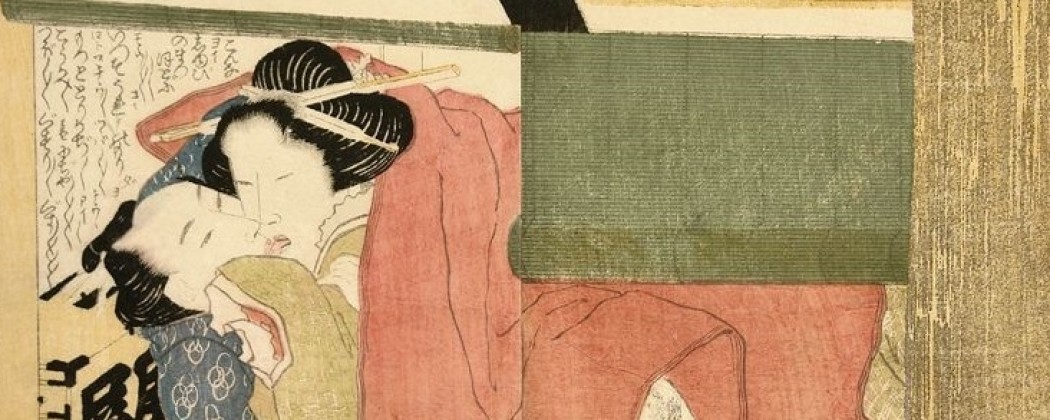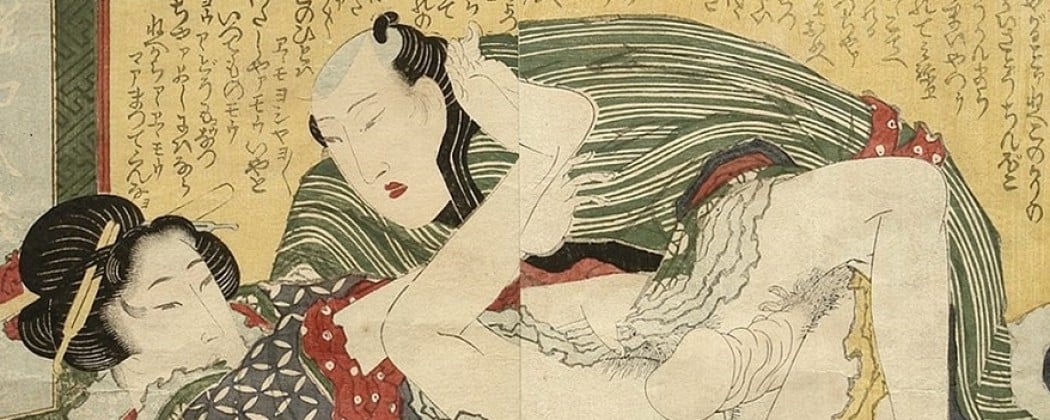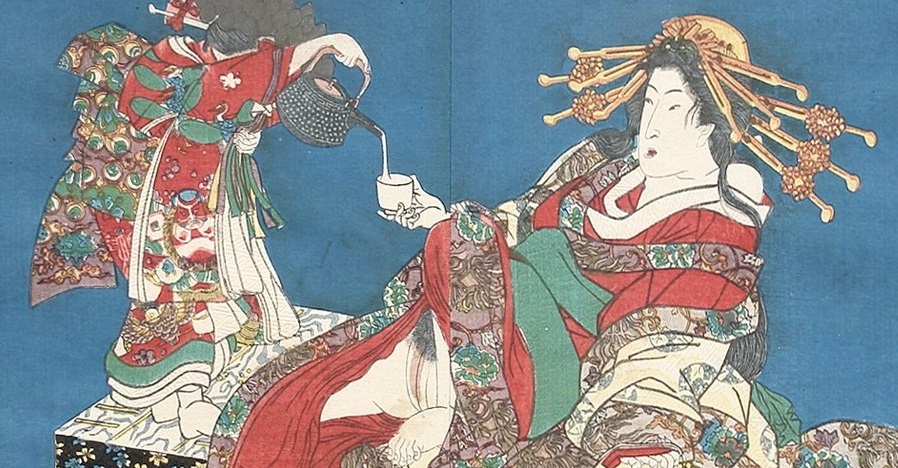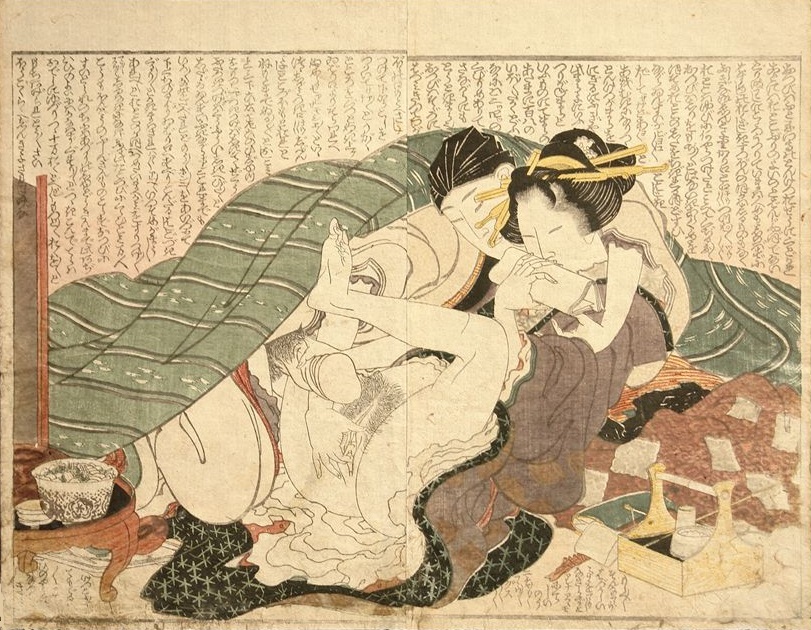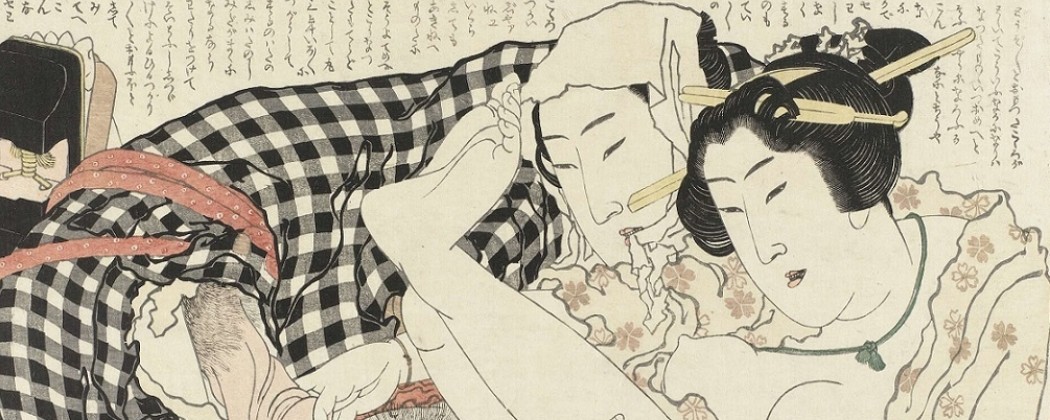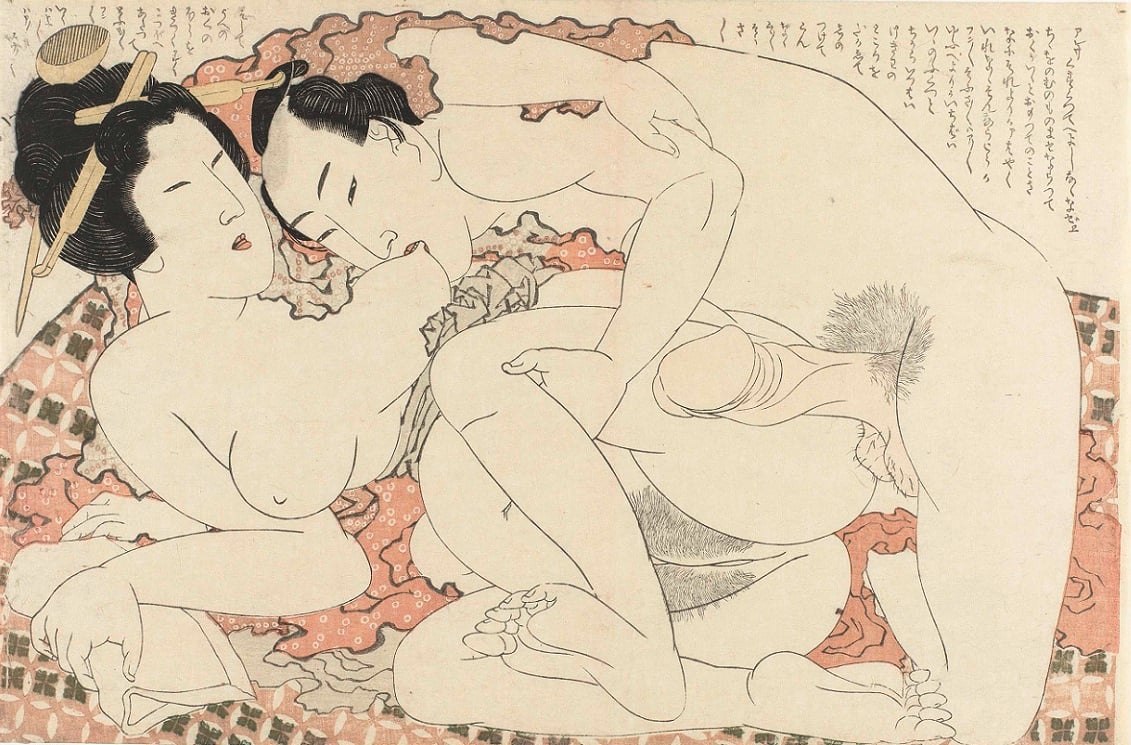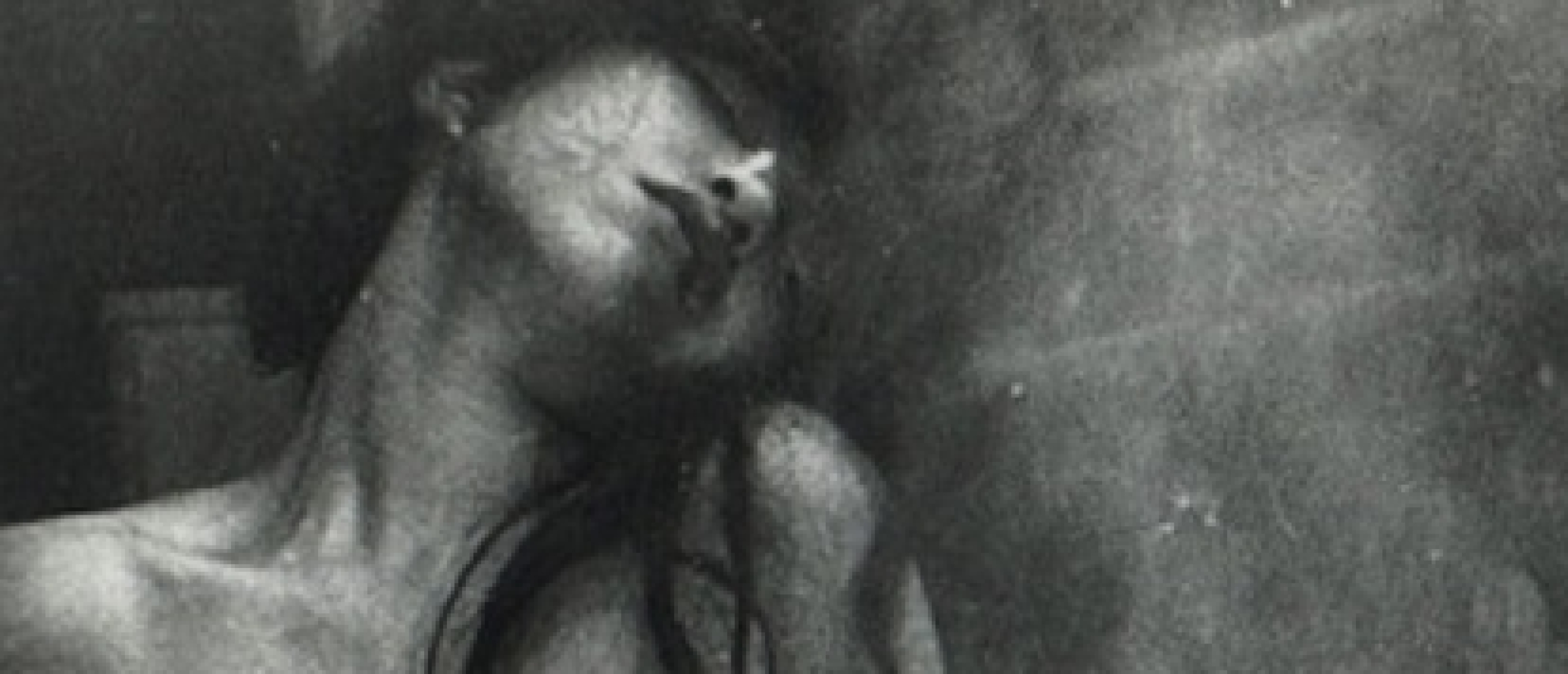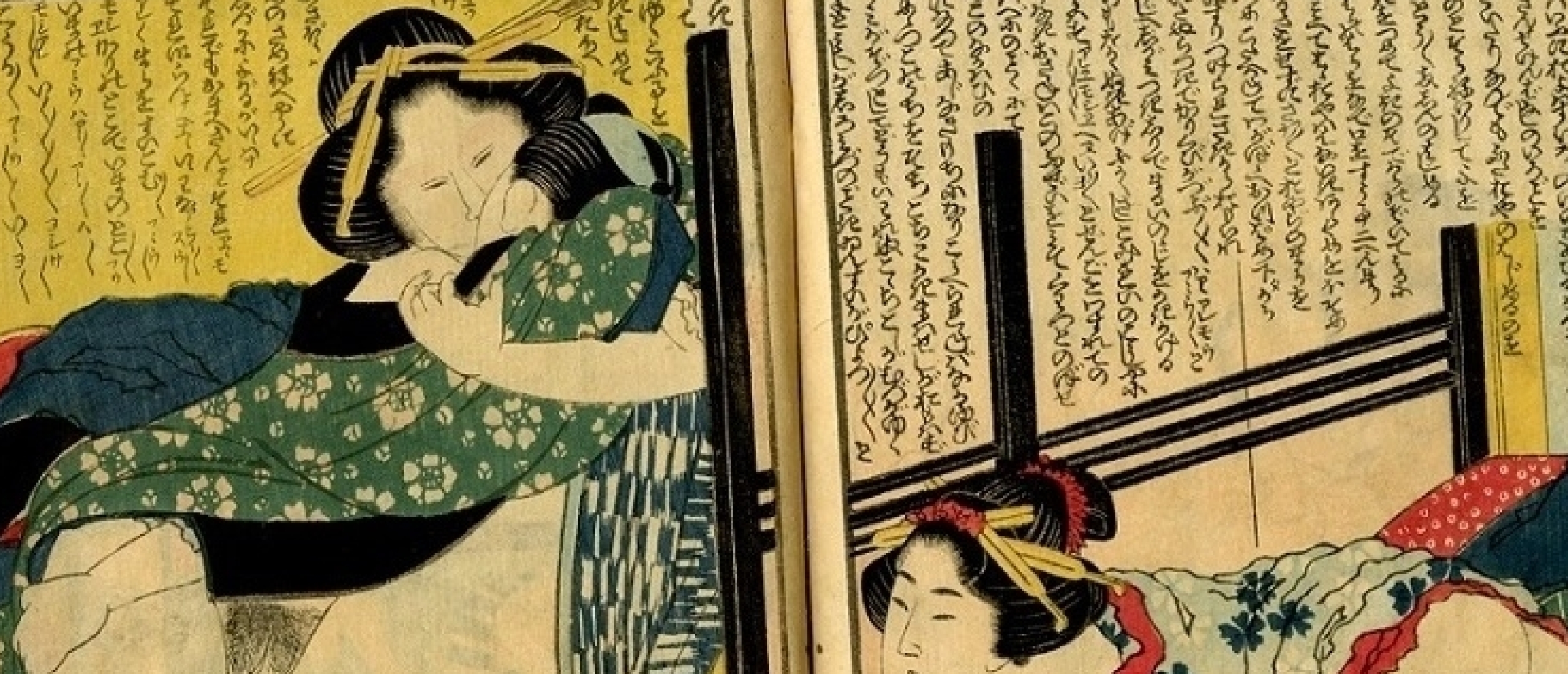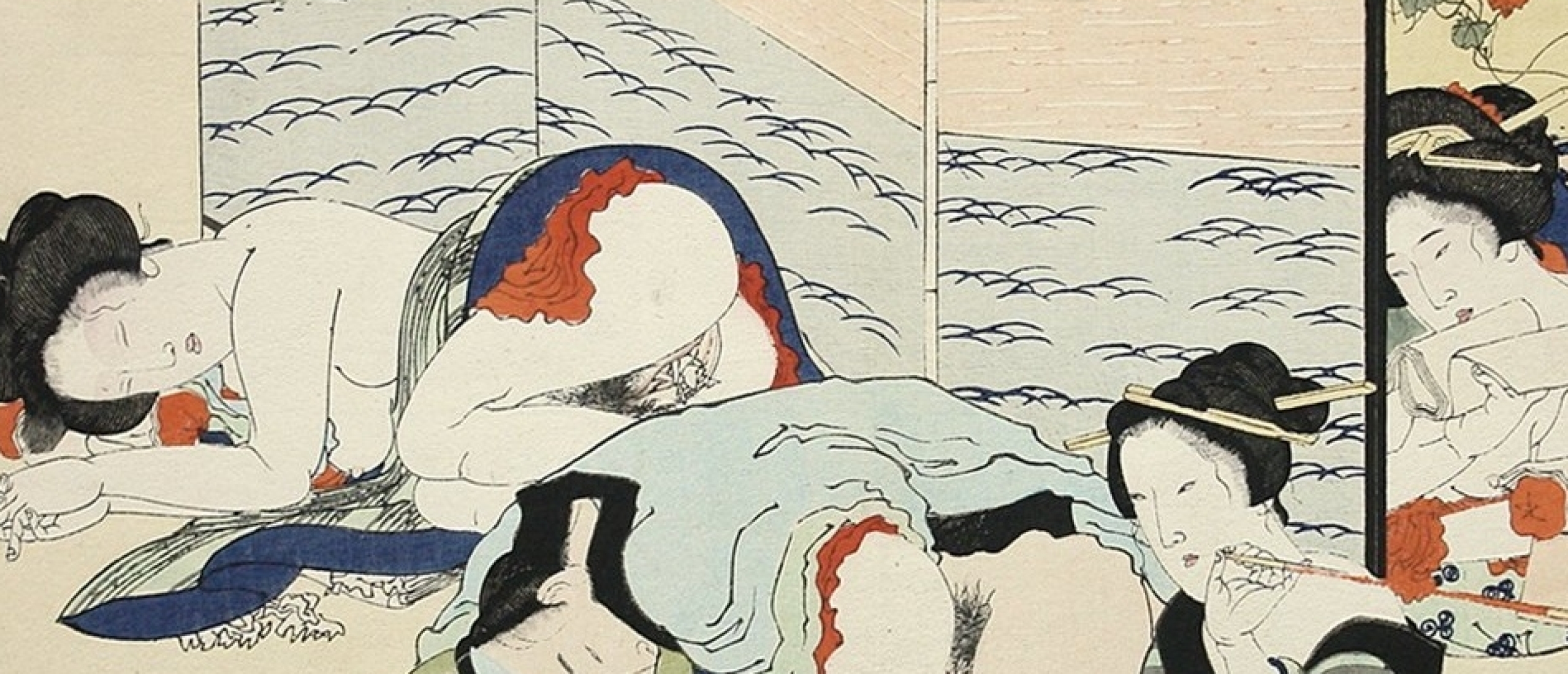
Katsushika Hokusai (1760-1849) produced The Gods of Intercourse (Manpuku wagojin) in 1821. It was his last contribution to shunga in book form. The erotic genre to which he had devoted so much energy during the ten years of his Taito period. Hokusai seems to have introduced a kind of reversed, anti-Confucian morality with this last series.

Fig. 1. The Gods of Intercourse – Osane (left) and Otsubi (right) , c.1821. Katsushika Hokusai
Erotic Tale
Unlike other erotic books which concentrate on tales of the pleasure quarters, The Gods of Intercourse is an example of the enpon form (erotic tales in colour). It describes stories concerning ordinary men and women. In this case the story involves Osane, a daughter of the rich merchant Sazayama Arisuke, and Otsubi, daughter of the ruined merchant Kawanuya Hinbei (see Fig.1.).
Depraved Prostitute
The tale is an ironic variation of moral stories: Otsubi learns to take advantage of her sexual attraction in order to gain an important position in society. Osane on the other hand grew up without a proper awareness of her own femininity ends up as a depraved prostitute. The explicitly anti-Confucian message is that the achievement of a certain social status depends entirely on one’s skill in exploiting sexual resources.

Fig.2. ‘The Depraved Merchant’s Daughter Osane‘ (c.1821) from the series ‘The Gods of Intercourse (Manpuku wagojin)’ series by Katsushika Hokusai (Sold)
Group Rape
The picture (Fig.2.) shows Osane at the lowest stage of prostitution. She is reduced to streetwalking and is shown here spread-eagled on the ground after a group rape. In spite of the brutality of the act, the picture in fact suggests that Osane has experienced a certain leasure. This is underlined by the number of paper handkerchiefs strewn around her, conventionally used in erotic prints to suggest female satisfaction. The tousled hair indicates her depraved nature and is a sign that she will come to a sorry end.

Fig.3. ‘Intimate travellers‘ (c.1821) from the series ‘The Gods of Intercourse (Manpuku wagojin)’
Source: ‘Poem of the Pillow and Other Stories’ by Gian Carlo Calza


